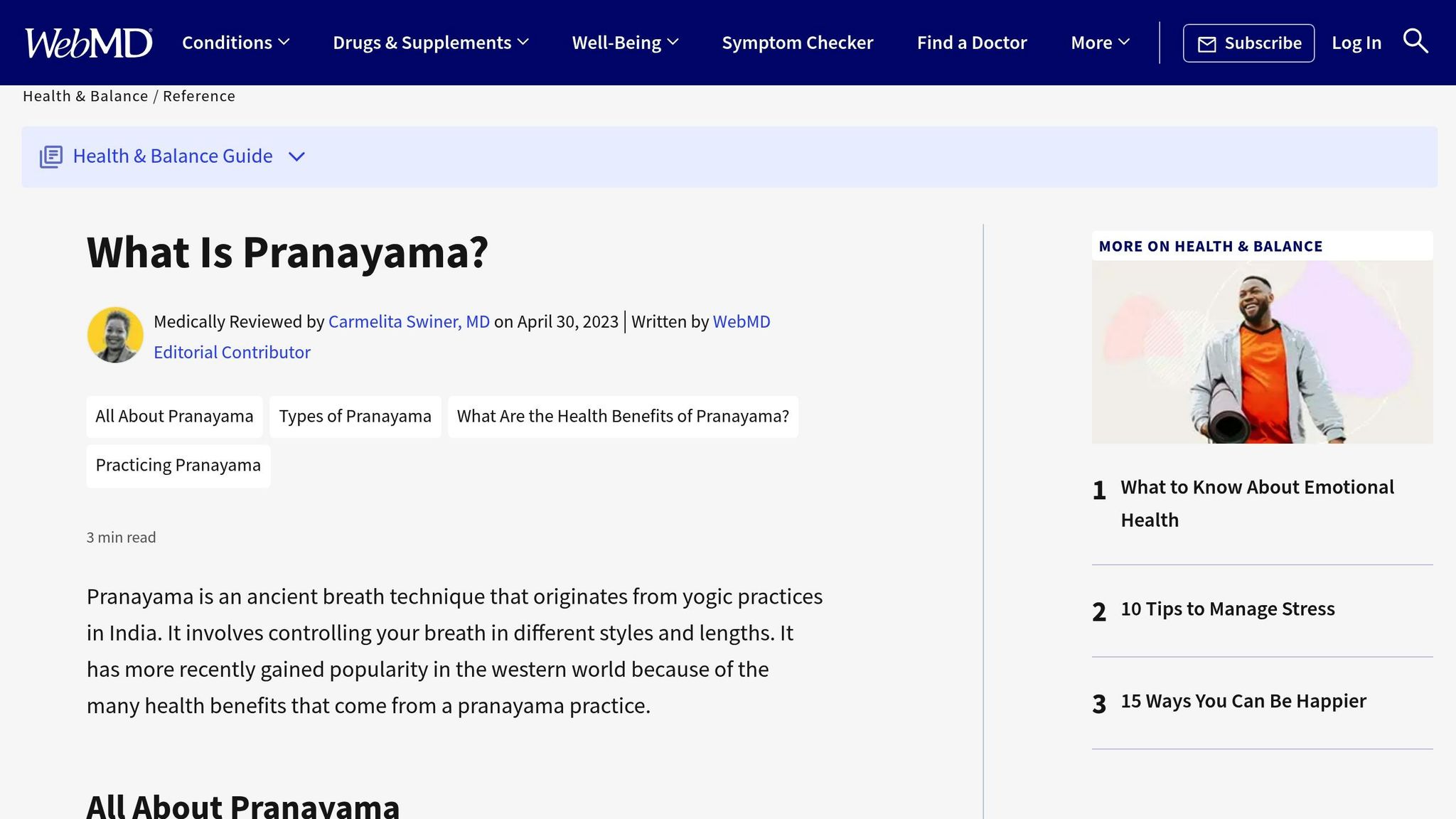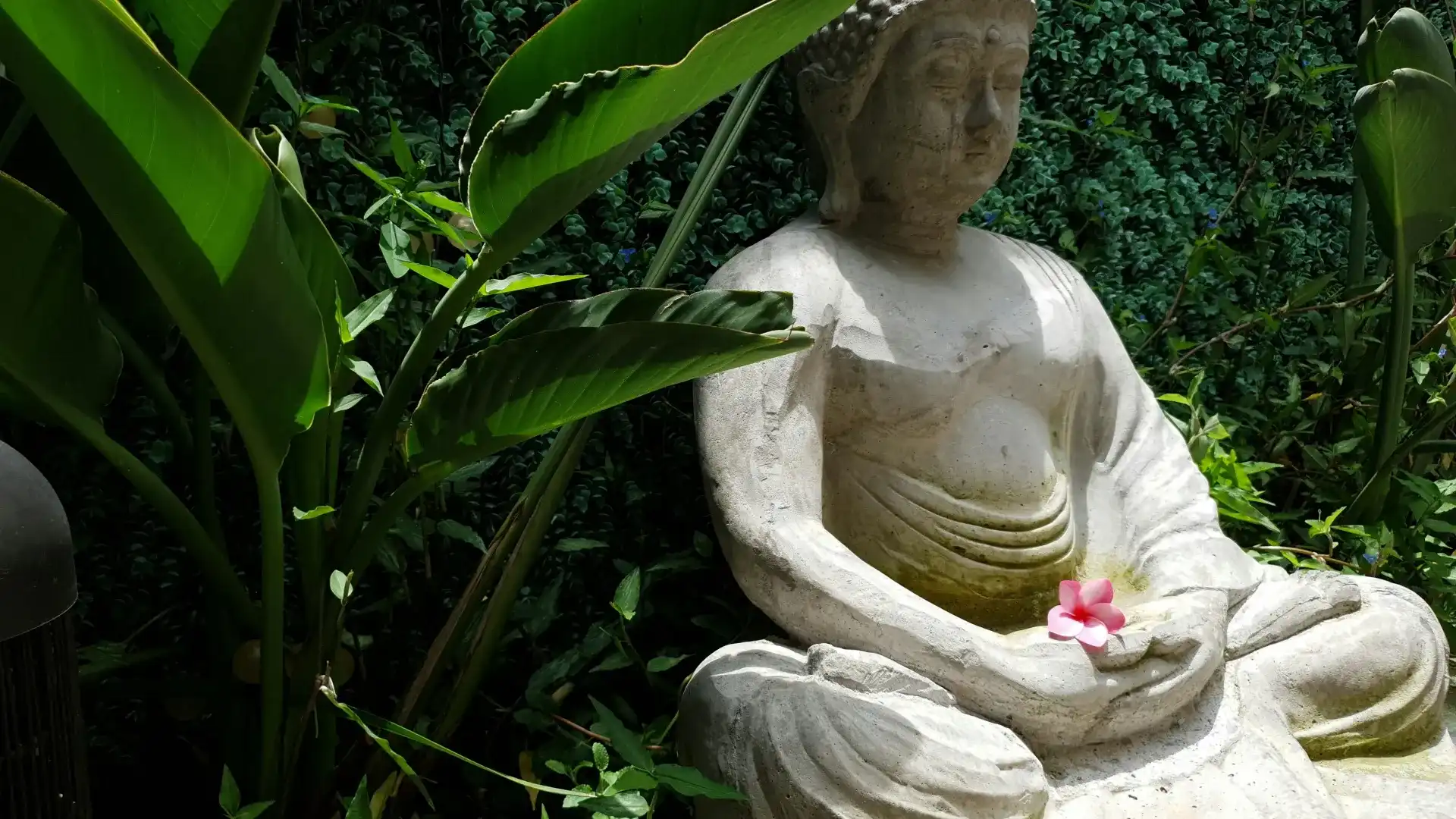Want to feel calmer and more balanced? Taoist breathing offers a simple, natural way to achieve inner stillness without forcing or controlling your breath.
Here’s what sets Taoist breathing apart:
- Effortless Practice: Focus on observing your natural breath without trying to change it.
- Whole-Body Breathing: Breathing involves the entire body, not just the lungs.
- Everyday Integration: Practice while sitting, walking, or even doing chores.
How does it compare to other methods like Buddhist mindfulness or yoga pranayama? Taoist breathing is less structured and avoids deliberate control, making it more relaxed and intuitive.
| Aspect | Taoist Breathing | Buddhist Techniques | Yoga Pranayama |
|---|---|---|---|
| Focus | Natural rhythm | Step-by-step mindfulness | Controlled patterns |
| Physical Effort | Minimal | Moderate | Moderate to high |
| Goal | Harmony with nature | Mental focus | Energy regulation |
Taoist breathing encourages you to let go of tension, align with nature’s rhythms, and find mental clarity through simplicity. Ready to give it a try? Start observing your breath today - no special equipment or posture required.
Natural Breath - Basic Taoist Breathing Method
Natural Breathing in Taoism
Taoist natural breathing focuses on returning to the body's instinctive patterns by letting go of learned tensions and syncing with nature's rhythms.
In Taoism, breath serves as a bridge between the mind and body. The practice is built around three main principles:
- Non-interference: Instead of controlling the breath, practitioners simply observe its natural flow.
- Whole-body involvement: Breathing is seen as an activity of the entire body, not just the lungs.
- Present-moment awareness: Attention is gently placed on the sensations of the current breath.
Unlike other traditional breathing practices, Taoist breathing emphasizes simplicity and effortless observation. For example, Buddhist mindfulness often focuses attention on specific points like the nostrils or abdomen, while yogic pranayama involves deliberate control of breathing patterns. Taoist breathing, on the other hand, encourages observing the breath as it naturally occurs. The table below highlights the differences:
| Aspect | Taoist Approach | Other Traditional Methods |
|---|---|---|
| Primary Focus | Natural rhythm | Controlled patterns |
| Mental State | Relaxed awareness | Focused concentration |
| Physical Effort | Minimal | Moderate to high |
| Duration | Unrestricted | Often timed intervals |
| Goal | Harmony with nature | Specific mental/physical states |
This comparison shows how Taoist breathing strikes a balance between passivity and control, reflecting the Taoist principle of harmonizing opposites - like conscious awareness and natural function.
The practice doesn’t require any special posture. It can be done while sitting, standing, or even walking. As practitioners release tension, their breathing naturally slows and deepens, promoting calm and clarity - key elements of Taoist inner stillness.
1. Taoist Breathing Method
The Taoist breathing method focuses on becoming aware of your natural breath through gentle observation.
Key Elements of the Practice
This method is built on three main principles:
- Physical Alignment: Maintain a relaxed, upright posture with your spine naturally aligned. This helps your breath flow freely.
- Mental State: Stay in a calm, attentive mindset, simply observing your breath rather than trying to control it.
- Breath Observation: Pay attention to the natural rise and fall of your breath, particularly in the lower abdomen (known as the dan tien).
These principles can easily become part of your everyday life, enriching your practice over time.
Incorporating Into Daily Life
Taoist breathing unfolds in three stages throughout the day:
- Morning Practice: Start your day with 5–10 minutes of quiet sitting, observing your breath without trying to change it.
- Active Practice: Bring breath awareness into simple daily activities, like walking or doing chores.
- Evening Practice: Wind down with 10–15 minutes of focused breathing to release tension from the day.
Recognizing Proper Breathing
Here’s how to tell if you’re on the right track:
| Indicator | Natural State | Forced State |
|---|---|---|
| Belly Movement | Gentle expansion | Overexerted pushing |
| Chest Motion | Minimal | Noticeable lifting |
| Breath Sound | Quiet | Audible |
| Facial Muscles | Relaxed | Tense |
| Overall Effort | Effortless | Controlled |
By observing these signs, you can refine your practice and avoid common pitfalls.
Common Challenges
One common struggle is letting go of the urge to control your breath. Natural breathing doesn’t mean breathing deeply - it’s about allowing your breath to settle into its own rhythm and depth.
As you progress, you’ll learn to recognize the difference between:
- Simply being aware of your breath versus trying to control it
- Following your natural rhythm versus forcing patterns
- Engaging your whole body in breathing versus isolating specific areas
With regular practice, your breath will naturally slow down and become more refined, fostering a sense of inner calm and stillness.
sbb-itb-4c1eb9b
2. Buddhist and Yoga Breathing
Unlike the effortless observation in Taoist breathing, Buddhist and yoga practices use structured techniques that gradually lead to natural stillness. These approaches provide a framework for inner calm while building on natural breath awareness.
Buddhist Breathing Techniques
Buddhist breathing practices focus on mindfulness of breath, known as ānāpānasati. This method involves clear, step-by-step techniques:
Foundation Practice
- Pay attention to the nostrils or upper lip, noticing each breath.
- Observe the subtle sensations that arise with each inhale and exhale.
Progressive Stages
- Begin by counting breaths from 1 to 10 to build focus.
- Move on to observing entire breath cycles without counting.
- Gradually maintain uninterrupted awareness of the breath.
Yoga Pranayama

Yoga incorporates breathing techniques, called pranayama, aimed at working with life energy. Here are some widely practiced methods:
| Technique | Description | Primary Focus |
|---|---|---|
| Ujjayi | Gentle throat constriction creating ocean-like sounds | Calming the mind |
| Nadi Shodhana | Breathing alternately through each nostril | Balancing energy |
| Bhramari | Humming sound resembling a bee's buzz | Easing tension |
Breath and Movement Integration
Unlike the stillness-centered Taoist approach, Buddhist and yoga practices often pair breath with movement for a dynamic experience:
Buddhist Walking Meditation
- Synchronize steps with your breath.
- Match your breathing rhythm to your walking pace.
- Stay mindful of both your movement and breathing.
Yoga Vinyasa
- Coordinate breath with posture transitions.
- Inhale during expansive movements.
- Exhale during contracting movements.
These practices use movement as a pathway to guide practitioners toward a natural and effortless state of awareness.
Transitioning to Stillness
Structured techniques in these traditions serve as stepping stones to a more natural rhythm:
- Start by following the techniques to establish a framework.
- Let your breath naturally settle into its own rhythm.
- Notice how stillness arises from this process.
Practice Tips
To make the most of these methods, consider these practical suggestions:
- Dedicate 5–10 minutes daily to practice.
- Recognize when effort feels forced and ease into a more relaxed approach.
- Allow the techniques to gradually lead you to effortless awareness.
These structured practices provide a helpful starting point for those who prefer guided methods to cultivate inner stillness through breath awareness.
Strengths and Limitations
Each breathing technique has its own set of benefits and challenges, making them suitable for different aspects of mindfulness practice.
Taoist breathing emphasizes natural observation and aligning with your body's rhythm. It's easy to incorporate into daily life and doesn't require much preparation. However, its subtle nature can make it harder for beginners to measure their progress since there are no clear external indicators.
On the other hand, Buddhist breathing techniques follow a more structured approach, offering clear steps to develop concentration and focus. Meanwhile, Yoga pranayama focuses on deliberate breath control and managing energy, which can feel more intensive but provides a deeper sense of regulation.
Ultimately, the best approach is the one that resonates with your personal goals and needs. Many practitioners combine elements from various methods to create a practice that evolves with their experience and understanding.
Key Findings
Our analysis highlights important aspects of Taoist natural breathing and its approach to achieving inner stillness. The practice focuses on wu wei (effortless action), fostering a gentle and intuitive connection with the breath. This approach not only sets Taoist breathing apart from other methods but also delivers observable benefits.
Studies indicate that Taoist breathing improves mental clarity and lowers stress levels by aligning with the body's natural rhythms. Combining breath observation with visualization techniques helps promote balance and a sense of calm.
Rooted in wu wei and natural alignment, this practice provides a straightforward way to reach inner stillness. In this state, mental clarity arises naturally through effortless awareness, reflecting Taoist principles of harmony with the natural order.






